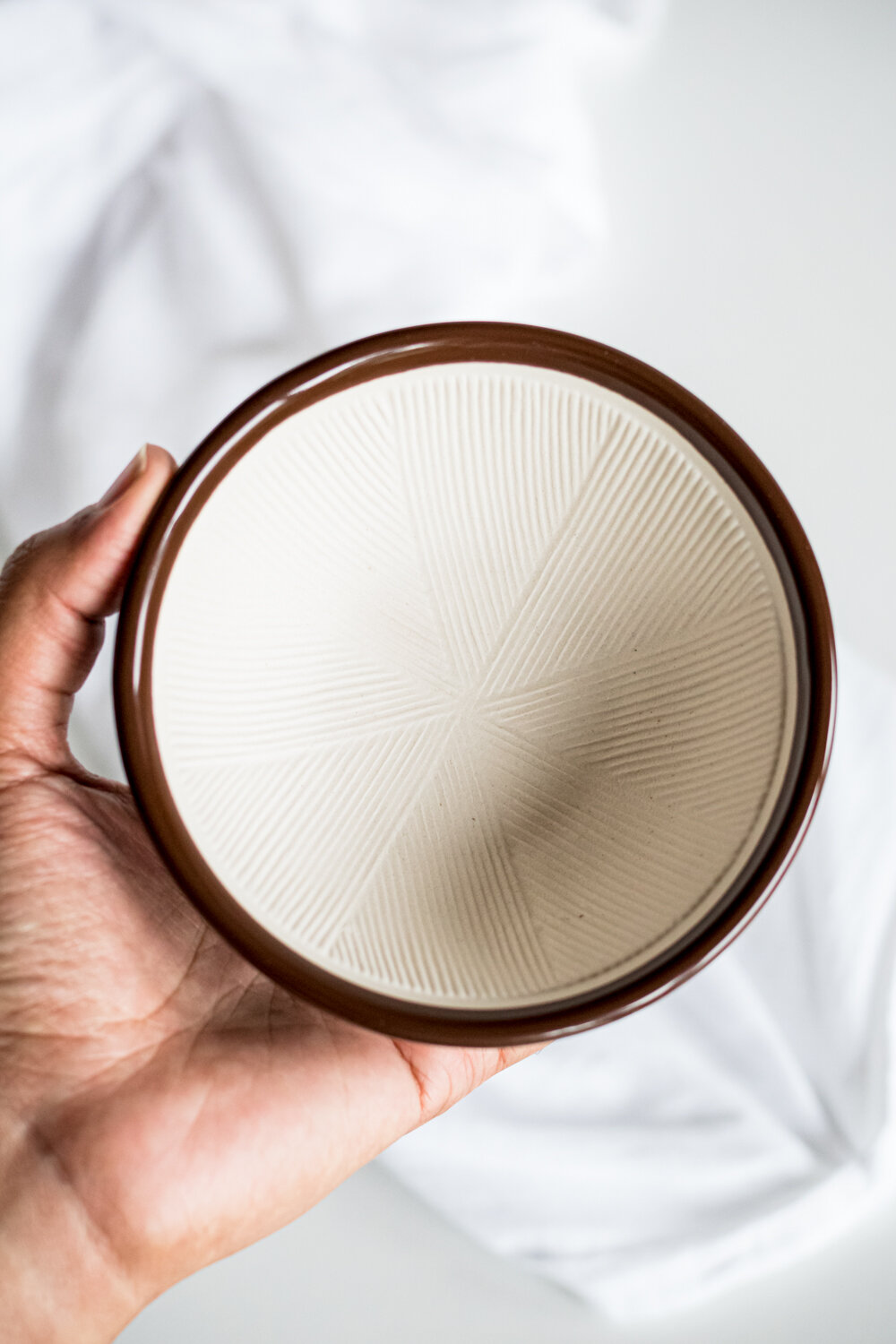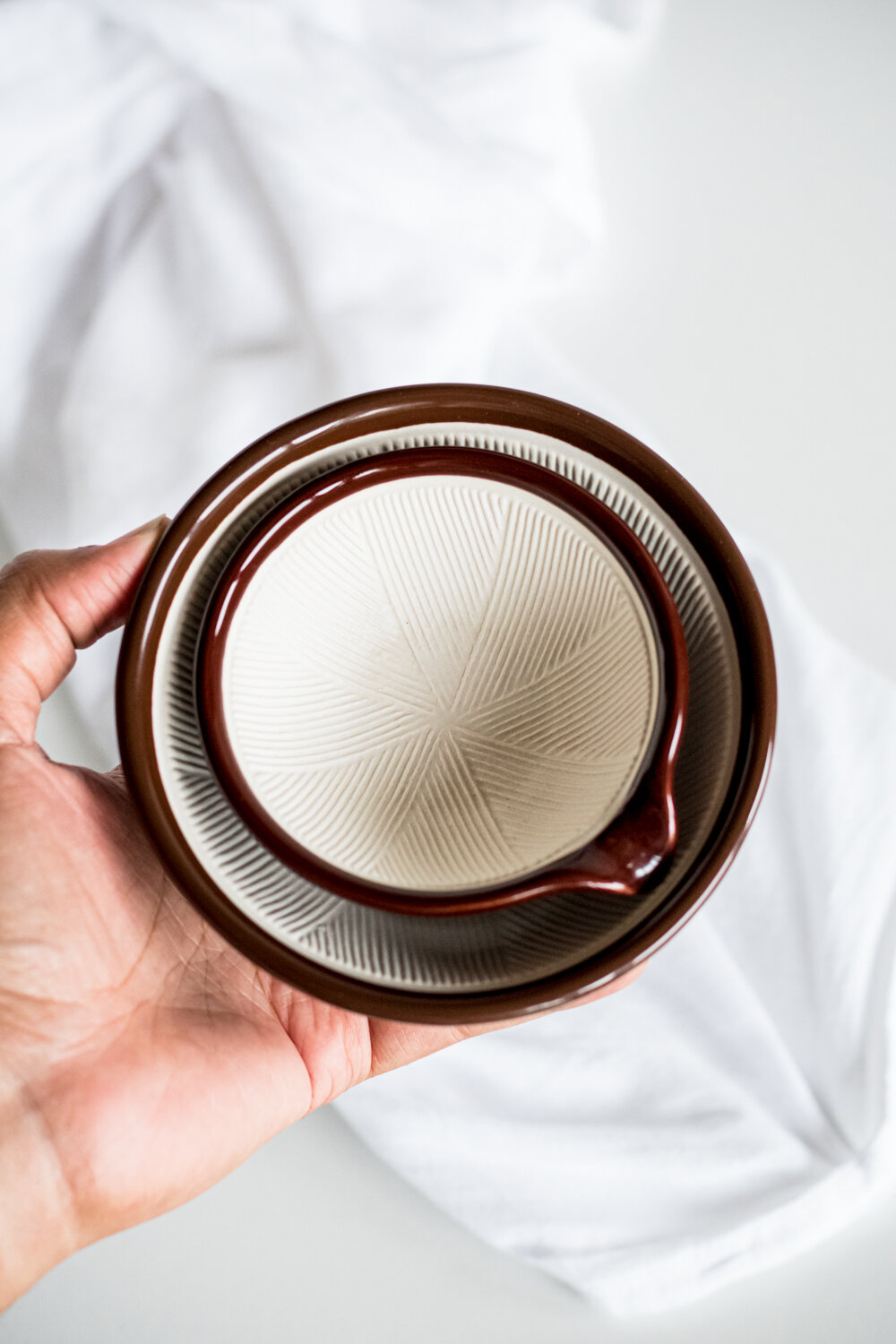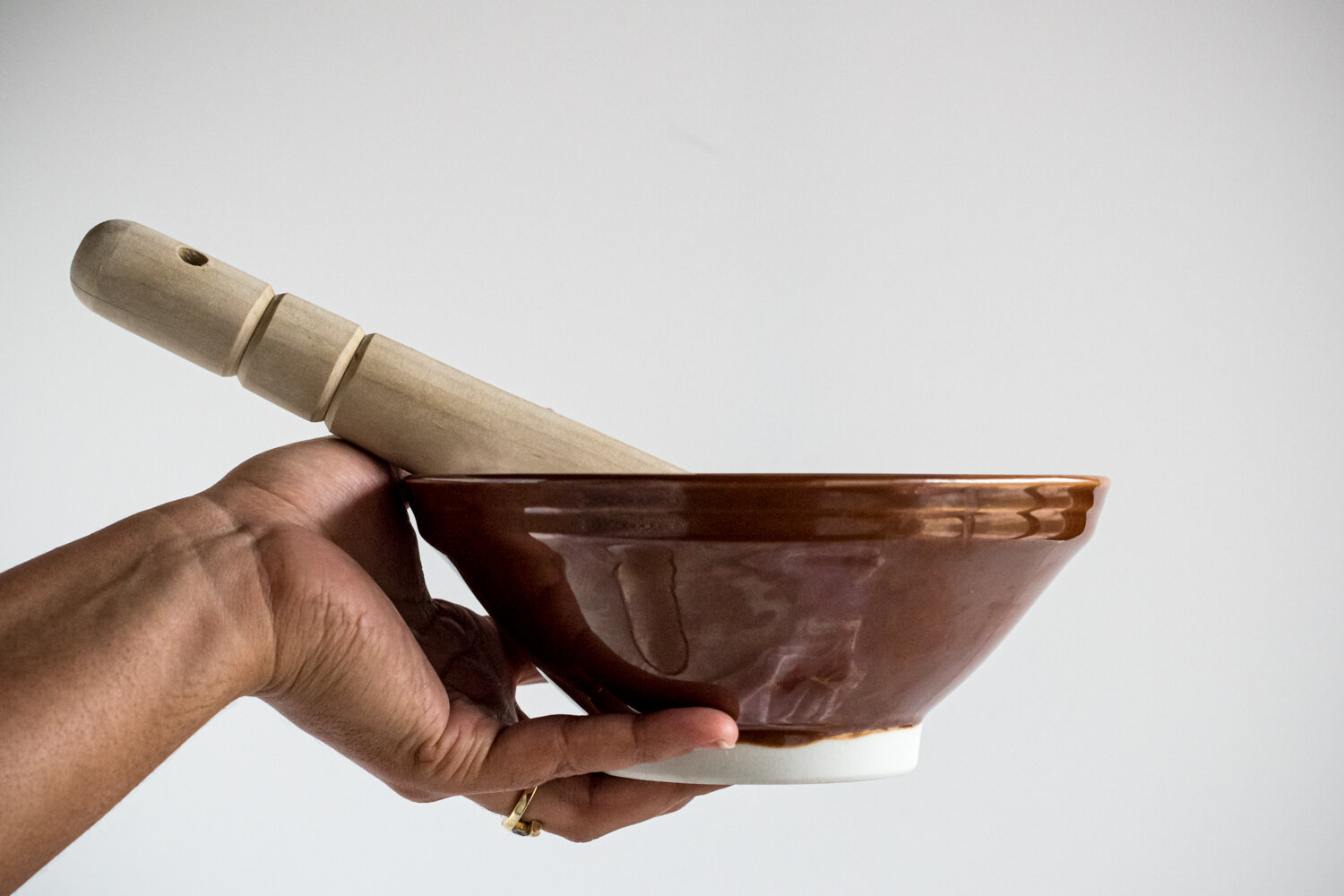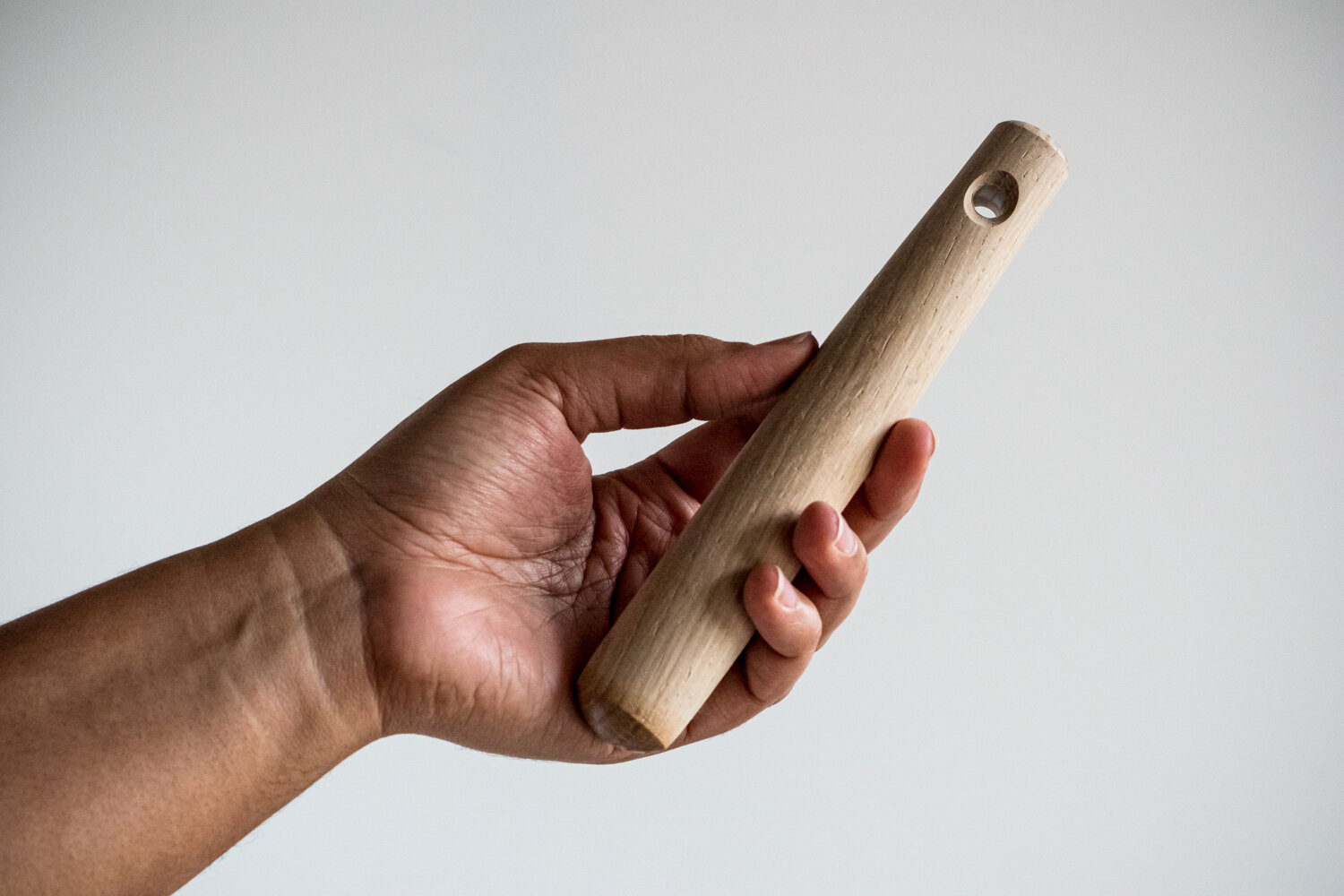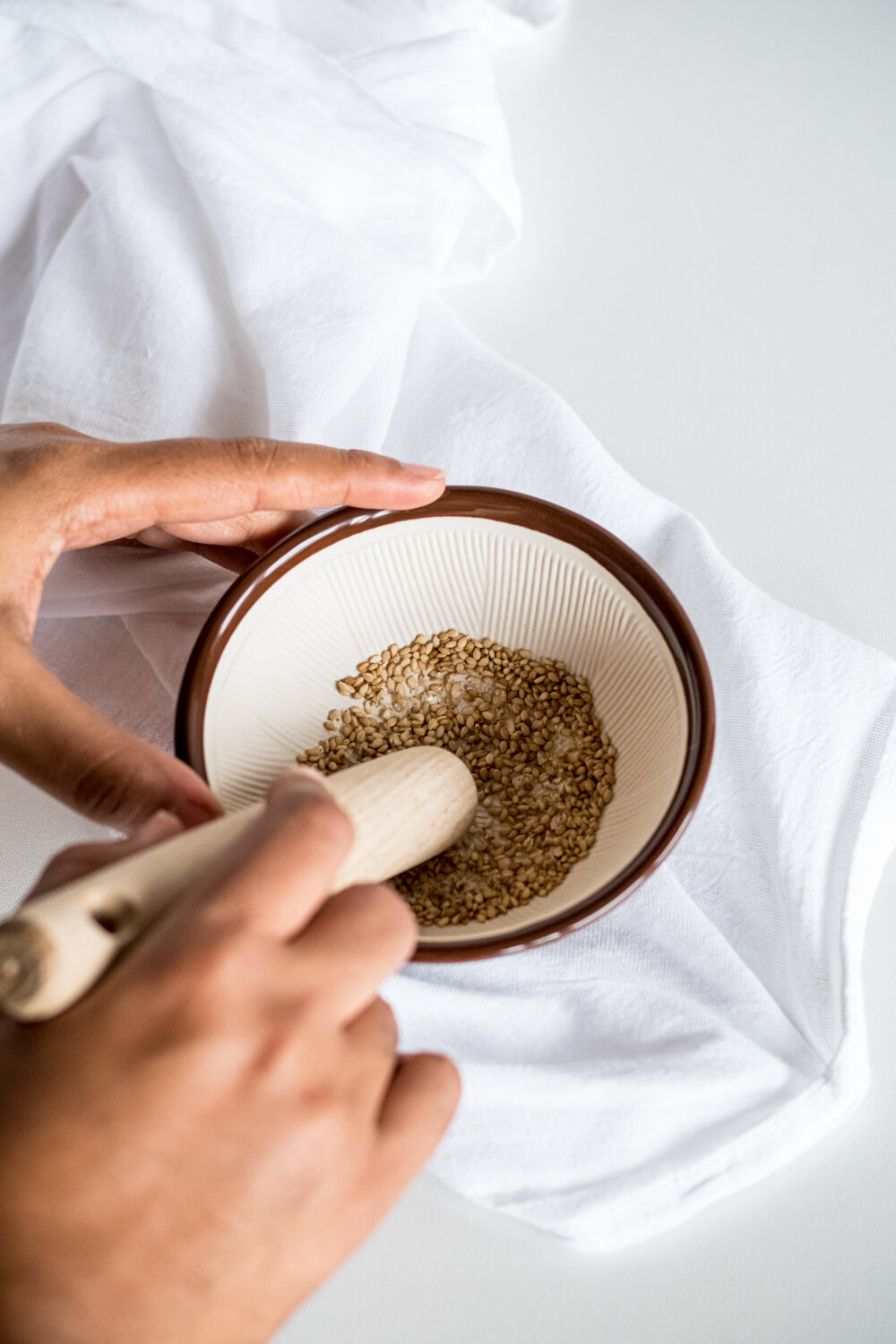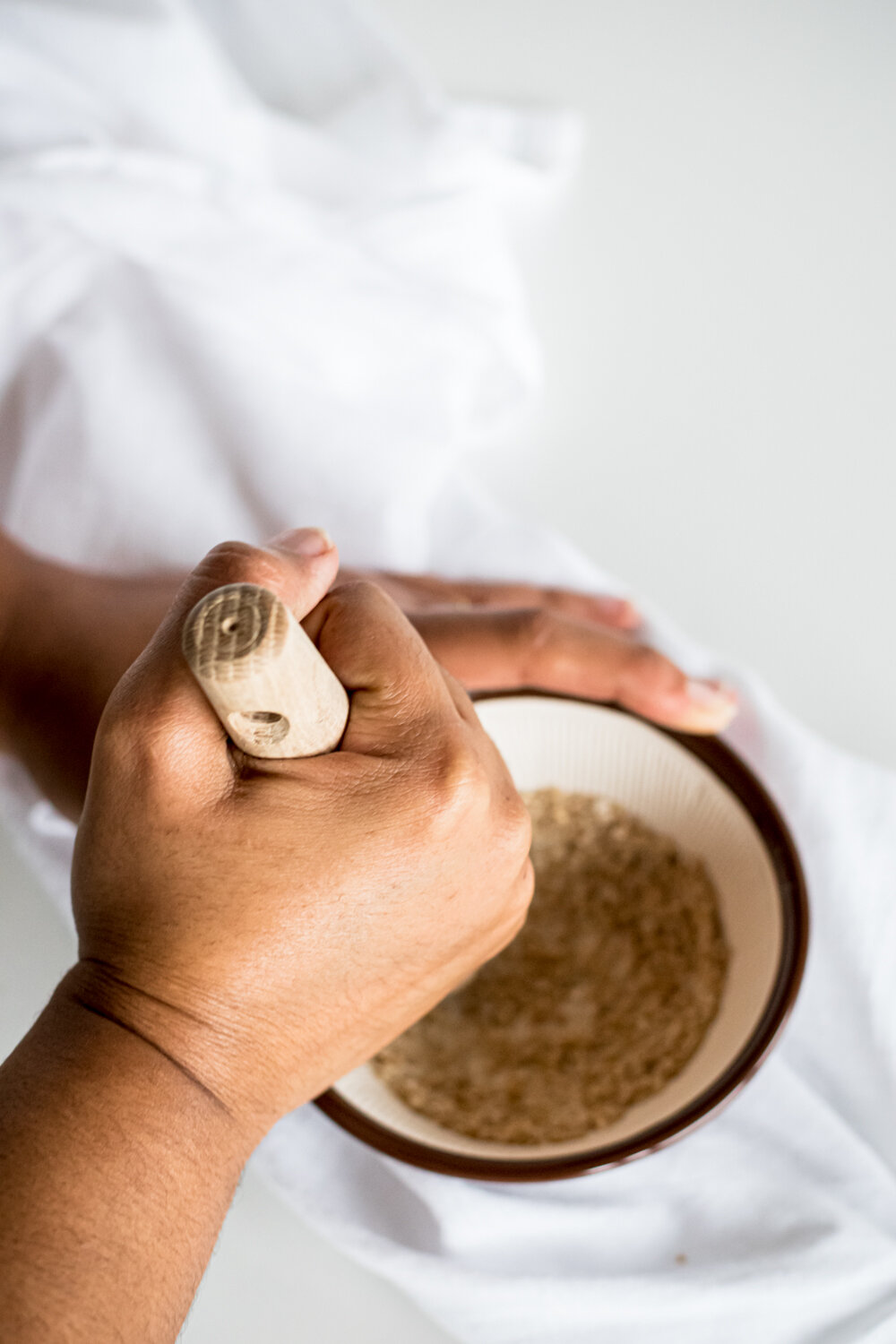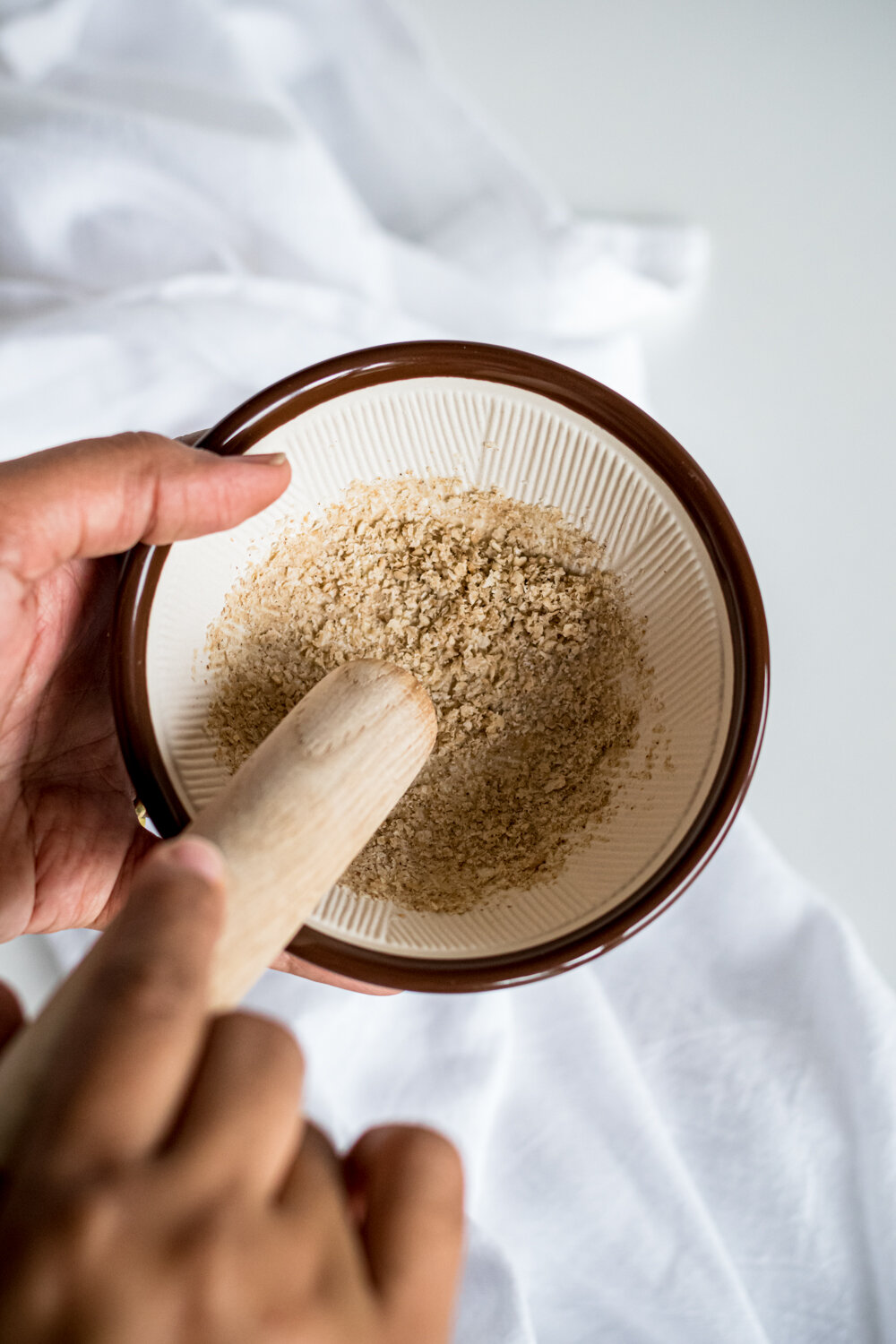Suribachi & Surikogi (Japanese Mortar & Pestle)
Before moving to Japan I enjoyed perusing global Asian markets with my best friend Jessi, especially the largest one in Raleigh, North Carolina called Grand Asia Market. This market provided an in-depth spotlight of food, cooking supplies, and more from various Asian countries such as China, Vietnam, Thailand, Japan, and more. In my earlier visits, I remember seeing a unique bowl with ridges on the inside and it was paired with a rounded wooden stick. I was so intrigued that I decided to go ahead and buy it. I must say it was one of the best purchases I’ve ever made from that market as well as in general when it came to my arsenal of cooking tools. After doing some research I found out that it was a Japanese mortar and pestle called suribachi and surikogi, respectively!
Let’s dive deep into this interesting and beautiful style of mortar and pestle. The bowl is called a suribachi. It’s ceramic and fully glazed on the outside sans the foot of the bowl. It’s glazed on the inner top edges of the bowl as well. What makes the suribachi unique is that the inside of the bowl is unglazed and has sharp ridges that sweep vertically to the center of the bowl in multiple sections. These ridges are called “Kushinome”, which means “comb pattern” in Nihongo (Japanese).
The pestle is called a surikogi. The surikogi nowadays is made of different types of hardwood. However, in previous times it was made from the sansho pepper tree, which gave a slight peppery flavor to foods that came in contact with it. The wooden surikogi grinds ingredients perfectly without damaging the ridges in the suribachi bowl.
The design of this type of mortar and pestle is special because of its ability to grind smaller ingredients like seeds, nuts, and spices. When using the surikogi, you want to sweep in a circular or back and forth motion against the ridges in the suribachi bowl in order to grind ingredients into fine granules or a powder with rapid ease. What’s helpful is to set the bowl on a damp kitchen towel to keep it stabilized on your countertop. The suribachi is not heavy like some western styles of mortar bowls so it’s important to maintain a firm grip on the bowl and the surikogi while you’re grinding. Since some elbow grease is required for adequate grinding, this will be a nice arm workout!
The suribachi comes in multiple sizes from tiny palm-sized to super large mixing bowl size. Some are also designed with a cute pour spout! The surikogi are also made in multiple sizes to match the size of the grinding bowl.
Here in Japan, the suribachi and surikogi are used in many ways! One way you may experience it as a visitor is when you order teishoku (set meal) at a tonkatsu restaurant. Tonkatsu is a fried pork cutlet and it’s a staple in Japanese cuisine. When you order a tonkatsu teishoku, it is most times served with finely shredded cabbage, miso soup, rice, tonkatsu sauce, and a tiny suribachi bowl that’s filled with toasted sesame seeds. The first thing you do is to grind the sesame seeds finely. Next, you add in your desired amount of tonkatsu sauce, mix well, dip in a slice of the juicy tonkatsu cutlet and take a bite. It is a delicious culinary experience!
Other ways the suribachi and surikogi are used in preparing Japanese cuisine are for grinding/pounding various meats and prawns into a paste that’s used for dumplings like Tsukune (chicken meatballs on skewers), mashing tofu to make Shiraae (mashed tofu salad with green vegetables and sesame seeds) and the list goes on.
Due to its incredible design, the suribachi and surikogi are versatile for culinary use well beyond Japanese cuisine. Examples are that you can make a delicious pesto sauce and a nice batch of fresh peanut butter. I like to use this toolset to make a delicious warm spice mix for my hummus recipe that has whole allspice berries, black peppercorns, whole cloves, cardamom seeds, mustard seeds, and more. This duo can grind all of these whole spices into an amazing powder in minutes! The surikogi is also great on its own to use for muddling herbs and spices for craft cocktails. One of my favorite ways to use my suribachi and surikogi is to freshly crack open coriander seeds for my everyday cooking.
Once I’m finished using the suribachi and surikogi, I handwash them both with soap and water which removes the strong aromatics from the ground ingredients. I let them air dry and then they are ready for their next use in the kitchen!
And that’s it for this month’s #ACAinJapan spotlight! I hope you enjoyed it and if you have experience using a Suribachi and Surikogi, let me know in the comments below. Take care and stay tuned for a recipe that’s created using this wonderful Japanese cooking tool!
-Shari :)
Photography & Styling by A Certain Aesthetic




